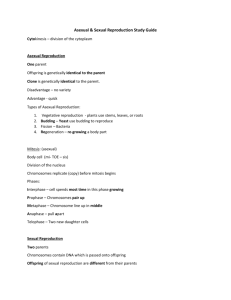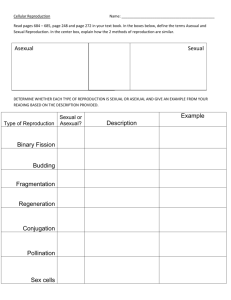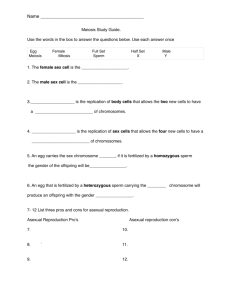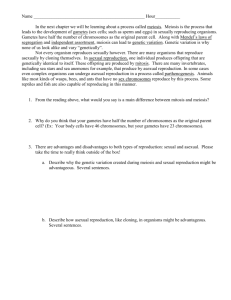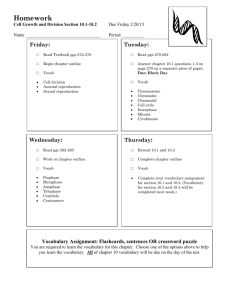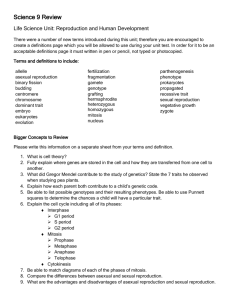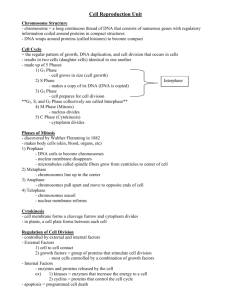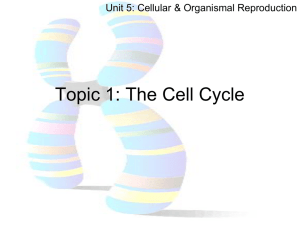Powerpoint For each slide there should be a good image and
advertisement
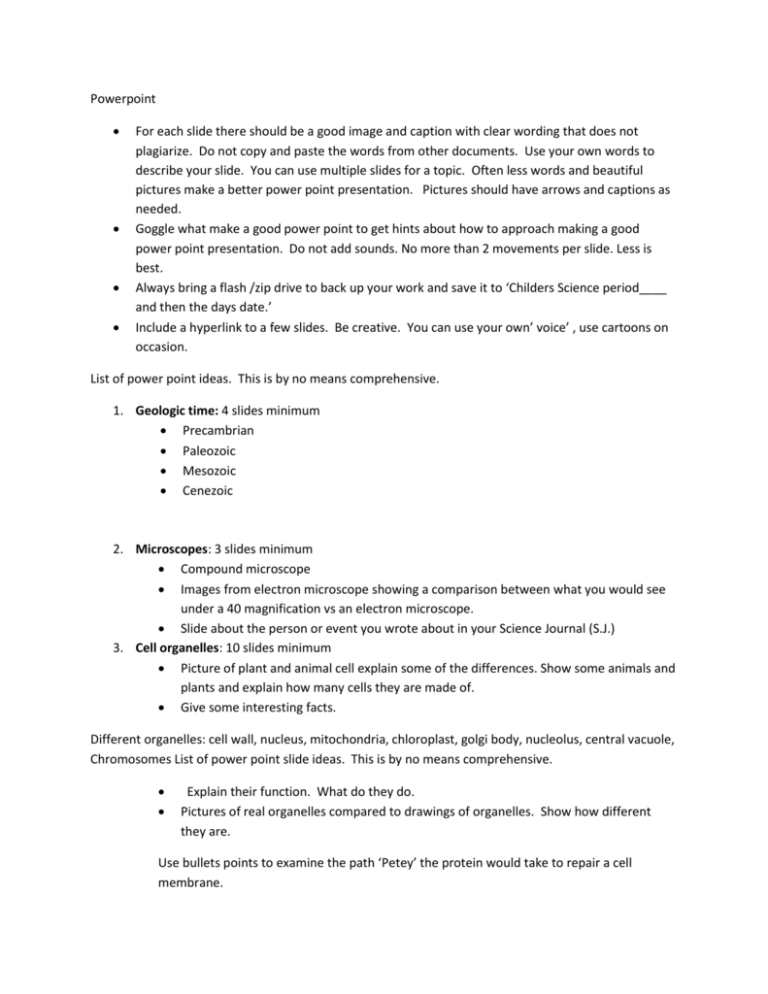
Powerpoint For each slide there should be a good image and caption with clear wording that does not plagiarize. Do not copy and paste the words from other documents. Use your own words to describe your slide. You can use multiple slides for a topic. Often less words and beautiful pictures make a better power point presentation. Pictures should have arrows and captions as needed. Goggle what make a good power point to get hints about how to approach making a good power point presentation. Do not add sounds. No more than 2 movements per slide. Less is best. Always bring a flash /zip drive to back up your work and save it to ‘Childers Science period____ and then the days date.’ Include a hyperlink to a few slides. Be creative. You can use your own’ voice’ , use cartoons on occasion. List of power point ideas. This is by no means comprehensive. 1. Geologic time: 4 slides minimum Precambrian Paleozoic Mesozoic Cenezoic 2. Microscopes: 3 slides minimum Compound microscope Images from electron microscope showing a comparison between what you would see under a 40 magnification vs an electron microscope. Slide about the person or event you wrote about in your Science Journal (S.J.) 3. Cell organelles: 10 slides minimum Picture of plant and animal cell explain some of the differences. Show some animals and plants and explain how many cells they are made of. Give some interesting facts. Different organelles: cell wall, nucleus, mitochondria, chloroplast, golgi body, nucleolus, central vacuole, Chromosomes List of power point slide ideas. This is by no means comprehensive. Explain their function. What do they do. Pictures of real organelles compared to drawings of organelles. Show how different they are. Use bullets points to examine the path ‘Petey’ the protein would take to repair a cell membrane. 4. Photosynthesis and Cellular Respiration: 4 slides minimum Explain the process of how each works. Show the steps. Show the organelle responsible. Explain how they are the opposite. Why are they so important to life? Write the formula. 5. Passive transport: Osmosis and diffusion and protein transport 6. Active Transport: Include exocytosis and endocytosis 7. Cell growth and division / Mitosis: Include why it is important The main phases The 4 sub steps of mitosis Extra : show the difference between chromatin, chromatid and chromosomes What do you end with after the cell cycle? 8. Sexual reproduction: include haploid cells (gametes), homologous chromosomes, zygote and the benefits of sexual reproduction. 9. Asexual reproduction: Include Fission, budding, animal regeneration , plant propagation, cloning. Explain and give examples for each. What are two advantages and disadvantages? 10. Include a few organisms we spoke about in class on Reproductive strategies : sexual vs asexual. (Your choice) Blue-headed Wrasse, Whiptail lizard, salmonella, Duck leech, Grizzly Bear, Amoeba, leafy sea dragon, meadow garlic, brittle star, Sand scorpion, Red kangaroo, spiny water flea. (Compare the two for reproduction) Which do you think are likely to be more successful at reproduction? Explain. What patterns do you notice about organisms that have lots of offspring (babies), few offspring? Genetic variation? 11. Cloning Basics. Explain the steps necessary for asexual cloning. What are some pros and cons? What is a morula?, a somatic cell? What are identical twins? What was the first clone? What has changed since then with regards to cloning? 12. DNA a closer look at chromosomes and their structure. Rosalind Franklin, Watson & Crick What is the basic DNA structure?( A, T, C, G, Sugar & Phosphate, Hydrogen bonds) How do proteins get made? Explain the steps. 13. Explain Ribosomes how proteins get made: Mrna , rrna, trna, 14. Explain mutations 15. Genetics: Gregor Mendel father of genetics what did he do and learn? Heredity Gene vs chromosome Dominant, Recessive Phenotype & Genotype Homozygous & Heterozygous Punnett square 16. How many genes do humans have? Where are they located? How many alleles do we get from our parents? 17. Evolution: Who is Darwin and what did he do 18. Natural Selection and Adaptation

